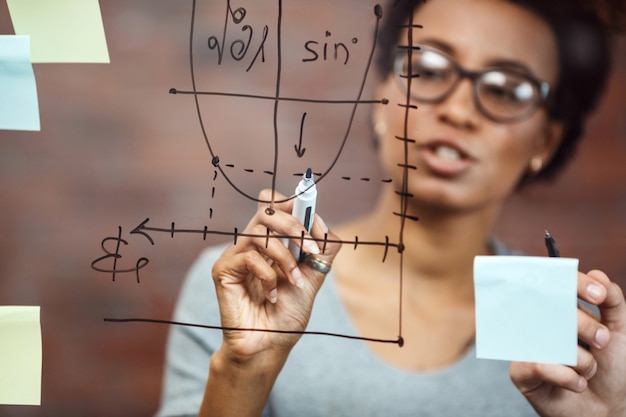
Drawing hands can be one of the most challenging aspects of figure drawing, often leaving artists frustrated and bewildered. Despite the intuitive notion that one can simply replicate the shapes and forms they see, the reality is that hands are complex structures governed by mathematical principles. Understanding these principles can significantly enhance an artist’s ability to capture the true essence of the human hand.
In this article, we will explore how mathematical concepts, such as proportions, angles, and geometry, play a crucial role in the representation of hands in art. While many artists rely on their intuition, those who delve into the underlying mathematics often find a clearer path to mastering this intricate subject. We will discuss various techniques that combine artistic skill with mathematical understanding, providing insights that can transform your drawing practice.
Whether you’re a seasoned artist or a beginner, recognizing the relationship between mathematics and drawing can unlock new levels of precision and creativity. By the end of this exploration, you may discover that the key to rendering hands lies not just in observation but in the application of mathematical reasoning.
Understanding the Geometry Behind Hand Anatomy
The human hand is a remarkable structure, showcasing both complexity and elegance. To truly appreciate its functionality, one must delve into the geometry that underpins its anatomy. From the positioning of bones to the alignment of muscles, mathematical principles play a crucial role in how our hands move and interact with the world.
At its core, the hand consists of various geometric shapes that combine to create a flexible and versatile tool. Each finger can be considered a series of interconnected segments, akin to a polygon, which enables a range of motions. Understanding these shapes is essential for artists and designers alike, as it helps them create more accurate representations of hands.
Key Geometric Features of Hand Anatomy
- Phalanges: The bones of the fingers are divided into three sections: proximal, middle, and distal, forming a complex system of angles and joints.
- Metacarpals: These bones connect the fingers to the wrist, contributing to the hand’s overall structure.
- Proportions: The ratios between different parts of the hand, such as the length of fingers compared to the palm, are consistent across individuals, following certain mathematical rules.
Understanding these geometric principles not only enhances our knowledge of hand anatomy but also informs various fields such as art, animation, and robotics. By applying mathematics to the study of the hand, we unlock the ultimate potential for innovation and creativity.
The Mathematics of Drawing Hands: When Math Trumps Intuition
Creating realistic hand drawings can often feel daunting, but by incorporating mathematical proportions, artists can enhance their accuracy and confidence. The human hand, with its complex structure and articulation, can be simplified through mathematical ratios, enabling artists to better grasp the relationships between different elements.
Using mathematical proportions not only aids in achieving realism but also allows artists to maintain consistency across various poses and angles. This structured approach provides a solid foundation for artistic expression, blending the realms of art and mathematics seamlessly.
Using Mathematical Proportions for Realistic Hand Drawings
To draw hands realistically, understanding and applying certain proportions is crucial. Here are some key points to consider:
- Overall Length: The total length of the hand can typically be divided into three equal parts: from the wrist to the base of the fingers, from the base of the fingers to the tip of the fingers, and from the tip of the fingers to the fingertips.
- Finger Proportions: Each finger can be divided into three segments (the phalanges), with the middle segment usually being the longest. This ratio helps in achieving a more natural look.
- Width Ratios: The width of the palm is often equal to the combined width of the four fingers (excluding the thumb), creating a balanced appearance.
In addition to these proportions, artists can apply the Golden Ratio for more aesthetically pleasing results. The Golden Ratio, approximately 1.618, can be seen in the lengths and widths of the fingers, as well as in the overall dimensions of the hand.
By embracing these mathematical principles, artists can transform their approach to drawing hands, ultimately leading to more realistic and dynamic representations.
Practical Tips for Integrating Math into Your Artistic Process
Integrating mathematics into your artistic practice can seem daunting, but it opens up a world of possibilities for enhancing your work. By understanding the underlying mathematical principles, you can create more dynamic and proportionate representations, particularly when drawing complex forms like hands. Whether you’re a seasoned artist or just starting, these tips can help you incorporate math into your art seamlessly.
Here are some practical strategies to consider:
- Utilize Grid Techniques: Implement a grid system on your reference images and your canvas. This can help maintain proportions and align elements accurately.
- Explore Geometry: Familiarize yourself with basic geometric shapes and how they can be used to break down complex forms into manageable parts.
- Practice Measurements: Use tools like calipers or rulers to measure proportions and distances in your reference material and replicate them in your drawings.
- Study the Golden Ratio: Learn how the Golden Ratio can guide your composition, ensuring balance and aesthetic appeal in your work.
- Incorporate Perspective: Understand the principles of linear perspective to create depth and realism in your drawings, particularly for hands in various positions.
By applying these tips, you will not only improve your technical skills but also gain a deeper appreciation for the relationship between art and mathematics. As you begin to embrace these concepts, you’ll find that math can significantly enhance your artistic intuition rather than hinder it.

Leave a Reply
You must be logged in to post a comment.